
The highest spending on a Senate race ever. The most spending from a candidate ever. Eight of the ten most expensive Senate races of all time. The 2019-2020 cycle saw record-breaking spending across the board, but most of all in the Senate as Republicans (pending the results of the runoffs in Georgia) look likely to maintain their majority and deny the Democrats full control of the government. More than $2B was spent on Senate races throughout 2019-2020, more than twice as much as the previous record set in 2017-2018. While Democrats had an easier path than in 2018 when they were defending most competitive seats, most of their pickup opportunities were in states won by Trump in 2016. In 2016 no state split its Senate and Presidential votes, and in 2020 ultimately only Maine did, resulting in a Susan Collins victory despite Biden winning the state. A huge wave of Democratic spending was not enough to offset the partisan leans of the states with Trump at the top of the ticket.
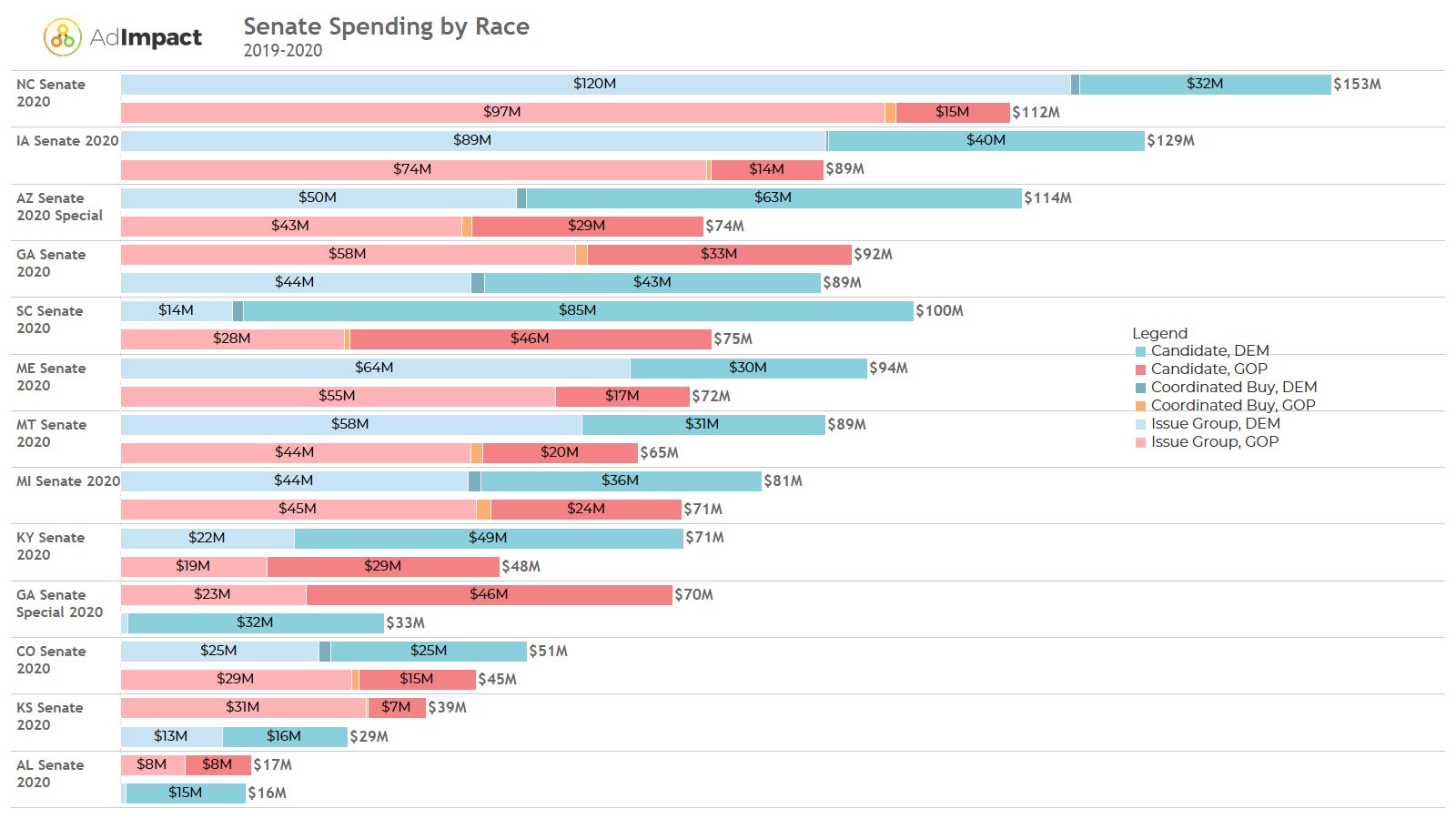
Ultimately, ten races crossed the $100m threshold in television, radio, and digital ad spending, with two surpassing $200m. Eight of the ten most expensive Senate races all-time occurred this cycle, with the Loeffler-Warnock runoff likely to become the 10th most expensive of all time. If that happens, the Florida Senate race from 2018 will be the only one of the ten most expensive Senate races of all time not to occur in 2020. Democrats held a commanding advantage in candidate spending, outspending their GOP counterparts $549M to $319M. This advantage was somewhat offset with GOP strength in outside group spending, which ended up at $587M apiece.
Only three seats flipped, less than many prognosticators expected. Republicans easily picked up Alabama, which was barely contested by the Democrats, with Doug Jones receiving no outside help at all. The Democrats picked up Colorado, widely seen as their best pickup opportunity, though this seat was well defended by Republican outside groups. Though Colorado was “only” the 11th most expensive Senate race for the 2020 cycle, it would have been the second most expensive Senate race of 2018. Arizona ended up as a Democratic flip, though by tighter margins than many expected. In what became the third most expensive Senate race of all time, Mark Kelly proved to be a strong fundraiser, and both parties spent heavily to assist their candidates.
Three of the most hotly contested seats were held by the GOP in relatively competitive presidential states: North Carolina, Iowa, and Maine. North Carolina led the way as the most expensive Senate race of all time, $40m ahead of the second most expensive race of all time, Iowa in 2020. Outside groups alone poured in a combined $200m and despite positive polling for Cunningham throughout the fall, Tillis prevailed by a narrow margin. Iowa was a similar story. Polling showed Greenfield up throughout the fall, but Ernst pulled ahead in the final weeks and ultimately prevailed by about 6 points. Maine went back and forth throughout the year, though Gideon often held a slight edge. Democrats finished with a $22m cumulative edge in spending, but Collins became the only senator in either 2016 or 2020 who won their race despite their party losing at the top of the ticket.
Democratic fundraising prowess was not limited to the premium pickup opportunities. Two of the three highest Democratic spenders for the cycle were long-shot bidders to knock off Mitch McConnell in blood-red Kentucky and Lindsey Graham in South Carolina. Jamie Harrison spent $85M, making him the highest spending Senate candidate of all time, though he ultimately lost by 10 points. Amy McGrath fared even worse, spending $49M and eventually losing by 20 points. These races may have diverted Republican outside money to McConnell and Graham that would have been useful elsewhere, and they also highlight what “celebrity” fundraisers can do. However, given the outcome of the races the money spent by Democrats in South Carolina and Kentucky may have been better utilized elsewhere.
It appears the wave of cash we started seeing in 2018 shows no signs of abating. A hyper-charged electorate and the ease of online fundraising has allowed candidates from both parties to shatter records on a quarterly basis, even amidst a global pandemic. Ultimately, though, increased partisanship has decreased the amount of ticket-splitting, especially in the Senate. There is still a fight to be had in the Georgia runoffs, but all signs point to the Senate remaining competitive and becoming the ultimate prize in 2022, when the map again looks full of potentially competitive races. It seems likely that we could see another record-breaking Senate cycle in two years.

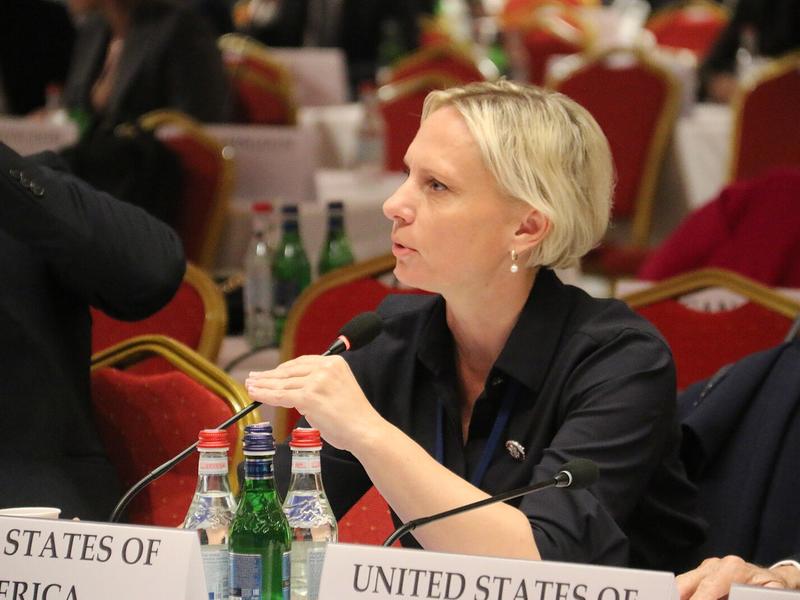

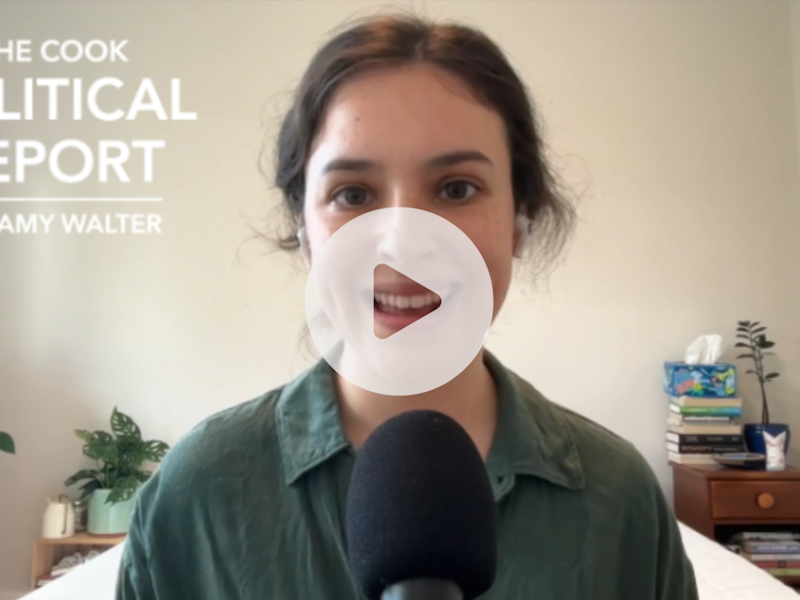



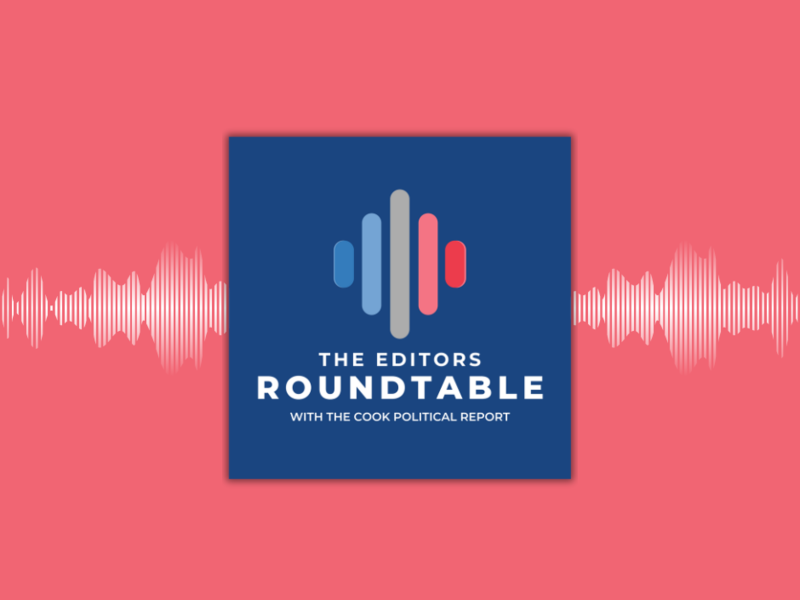
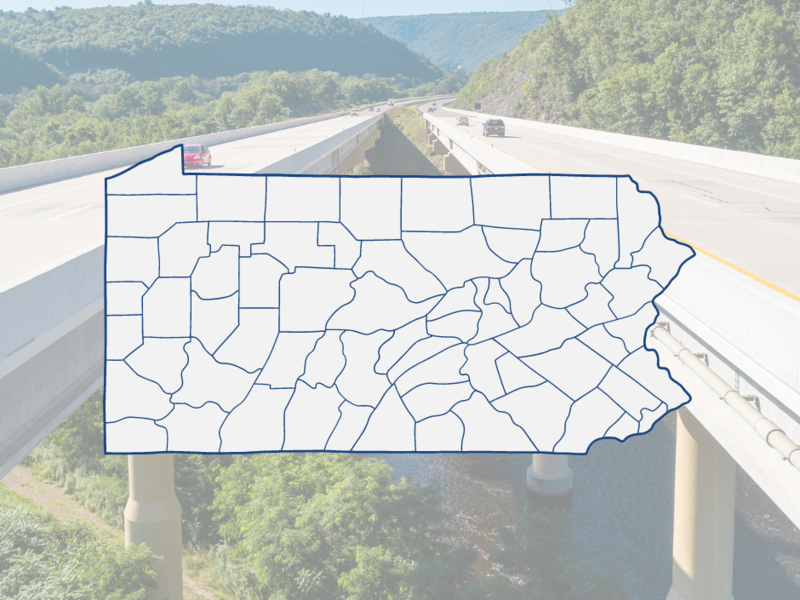
Subscribe Today
Our subscribers have first access to individual race pages for each House, Senate and Governors race, which will include race ratings (each race is rated on a seven-point scale) and a narrative analysis pertaining to that race.